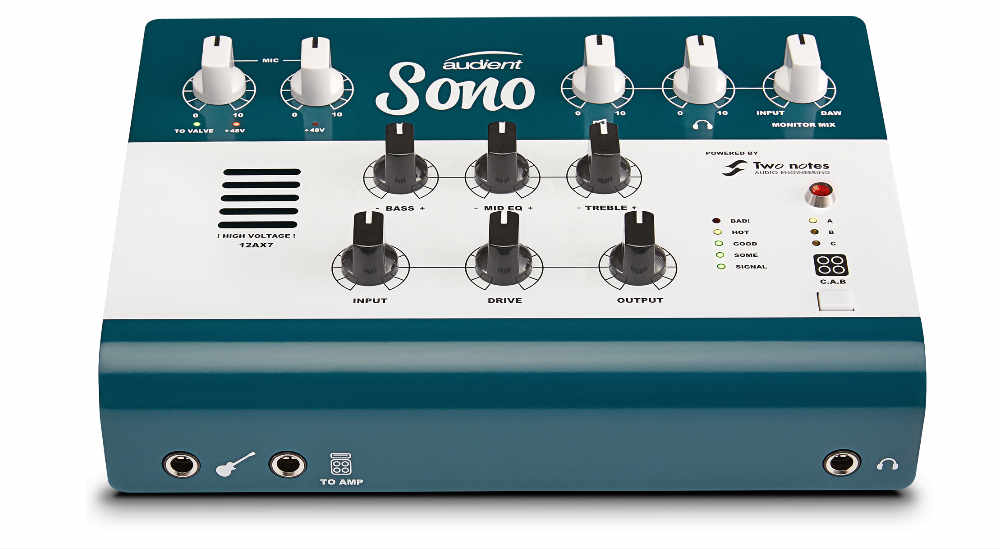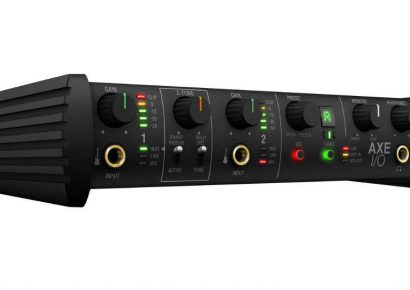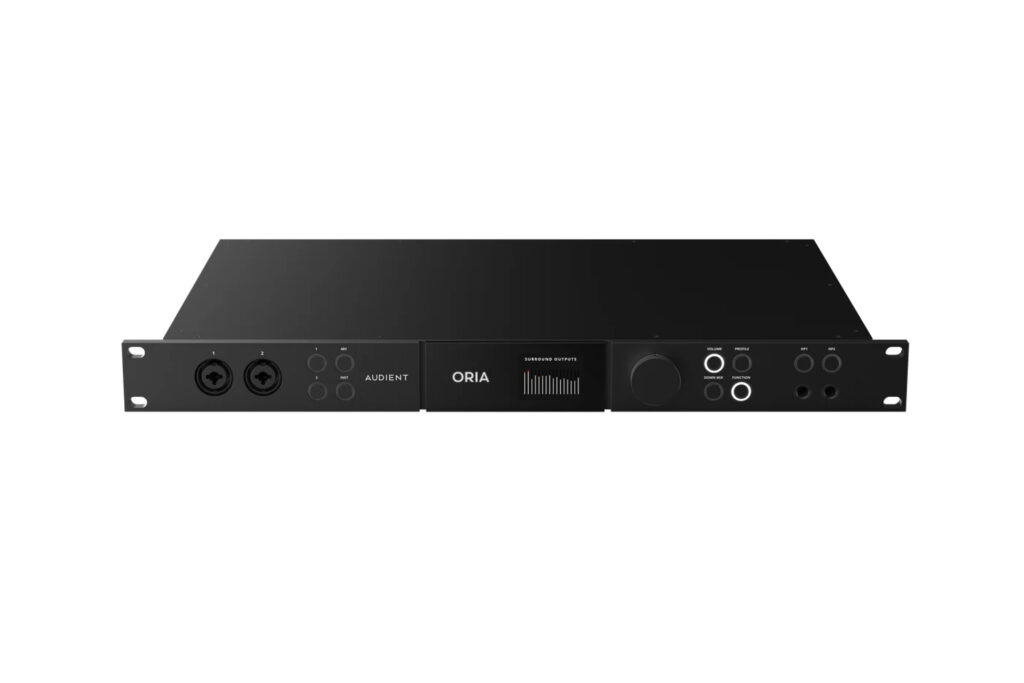The Audient Sono includes the same preamps found on Audient’s bigger format consoles such as the ASP8024. A lot of Audient’s bigger format products are based pretty closely on SSL, so you can rest assured that the preamps are designed with your playing and the final product in mind. The Sono features a handy monitor mix, that toggles between the input and your DAW playback – a feature that is becoming increasingly common, however endlessly useful for recording yourself or others.
What’s more, while recording, you can choose to send your signal through the 12AX7 input valve or not, or even bypass the preamp circuity entirely so you can use your own preamp. This kind of addition shows that Audient is not only committed to producing great products, but to treating lower-level products the same as any other. You can retain clear, concise D.I. tracks, or warm them up before whatever you’ve thrown into the signal chain next. Both preamps, before the valve, have 60dB of gain, and the input meter labeling on the front panel is a gentle reminder of where you should be sitting, giving a little comedic relief from such a serious piece of kit.
Finally in the signal chain, users can load up to three cabinets into the Audient Sono and cycle through them with the A/B/C switches located on the bottom right of the unit. Cabinets are selected, tones dialed and ‘microphones’ are placed via Two Notes’ Torpedo Power Amp Modeling and Cab Simulation app. However, don’t let the guitar and bass cabinets stop you from exploring the possibilities with this product.
The room sounds themselves are great – so why can’t that be your drum room? The reverb is already nicely filtered and would sit great in any mix – it could be the trick up your sleeve that propels you ahead in such a competitive market. The software includes 20 amps to start with, and eight rooms, as well as providing eight microphone choices for a bunch of different tonal options. Two Notes has an even bigger array of amps and cabinet models available for purchase.
Overall, while the Sono is marketed as a one-stop-shop for guitarists, it’s really so much more. Think of it as an interface with a valve preamp and impulse responses as standard, but also consider what a phenomenal addition to any studio it would be. Drums and vocals can be re-amped to achieve creative ambience, synths can come alive through its pure valve preamp, and any other instrument can get gritty through the phenomenally designed preamp routing – basically, there’s certainly no shortage of versatility with the Sonos.


